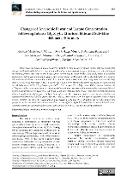Changes of Anaerobic Power and Lactate Concentration following Intense Glycolytic Efforts in Elite and Sub-Elite 400-meter Sprinters

Author
Mastalerz, Andrzej
Johne, Monika
Mroz, Anna
Bojarczuk, Aleksandra
Pisz, Anna
Maculewicz, Ewelina
Publication date
2024Published in
Journal of Human KineticsVolume / Issue
91 (April Spec Issue)ISBN / ISSN
ISSN: 1640-5544ISBN / ISSN
eISSN: 1899-7562Funding Information
UK/COOP/COOP
Metadata
Show full item recordCollections
This publication has a published version with DOI 10.5114/jhk/186074
Abstract
400-m races are based on anaerobic energy metabolism, they induce significant muscle fatigue, muscle fiber damage, and high blood lactate (LA) concentration. Despite extensive research on sprint training, our understanding of the training process that leads to world-class sprint performance is rather limited. This study aimed to determine differences in LA concentration and anaerobic power using jumping tests after an intense glycolytic effort in a group of elite and sub-elite 400-m runners. One hundred thirty male runners were divided into two groups: elite (n = 66, body mass = 73.4 +/- 7.8 kg, body height = 182.1 +/- 6.2 cm, age = 20.8 +/- 4.0 y) running the 400-m dash below 50 s and sub-elite (n = 64, body mass = 72.0 +/- 7.1 kg, body height = 182.1 +/- 5.2 cm, age = 20.8 +/- 4.0 y) with a 400-m personal best above 50 s. The power of the countermovement and the sequential squat jumps was measured in two sets after a warm-up, followed by two intermittent 30-s Wingate tests. LA concentration was measured eight times. It was observed that elite athletes achieved significantly higher power in both types of jumps. The maximum post-exercise LA concentration was significantly lower in the sub-elite group after the 3rd, the 6th, the 9th, and the 20th min after the cessation of two Wingate tests (p < 0.001). The rate of LA accumulation after exercise and the rate of LA utilization did not differ between the groups. It can be concluded that elite and non-elite runners differ in higher LA production but not in LA utilization. Anaerobic power and LA concentration seem to differentiate between 400 elite and sub-elite performance.
Keywords
fatigue, competition, blood lactate, sprinting,
Permanent link
https://hdl.handle.net/20.500.14178/2638License
Full text of this result is licensed under: Creative Commons Uveďte původ 4.0 International







